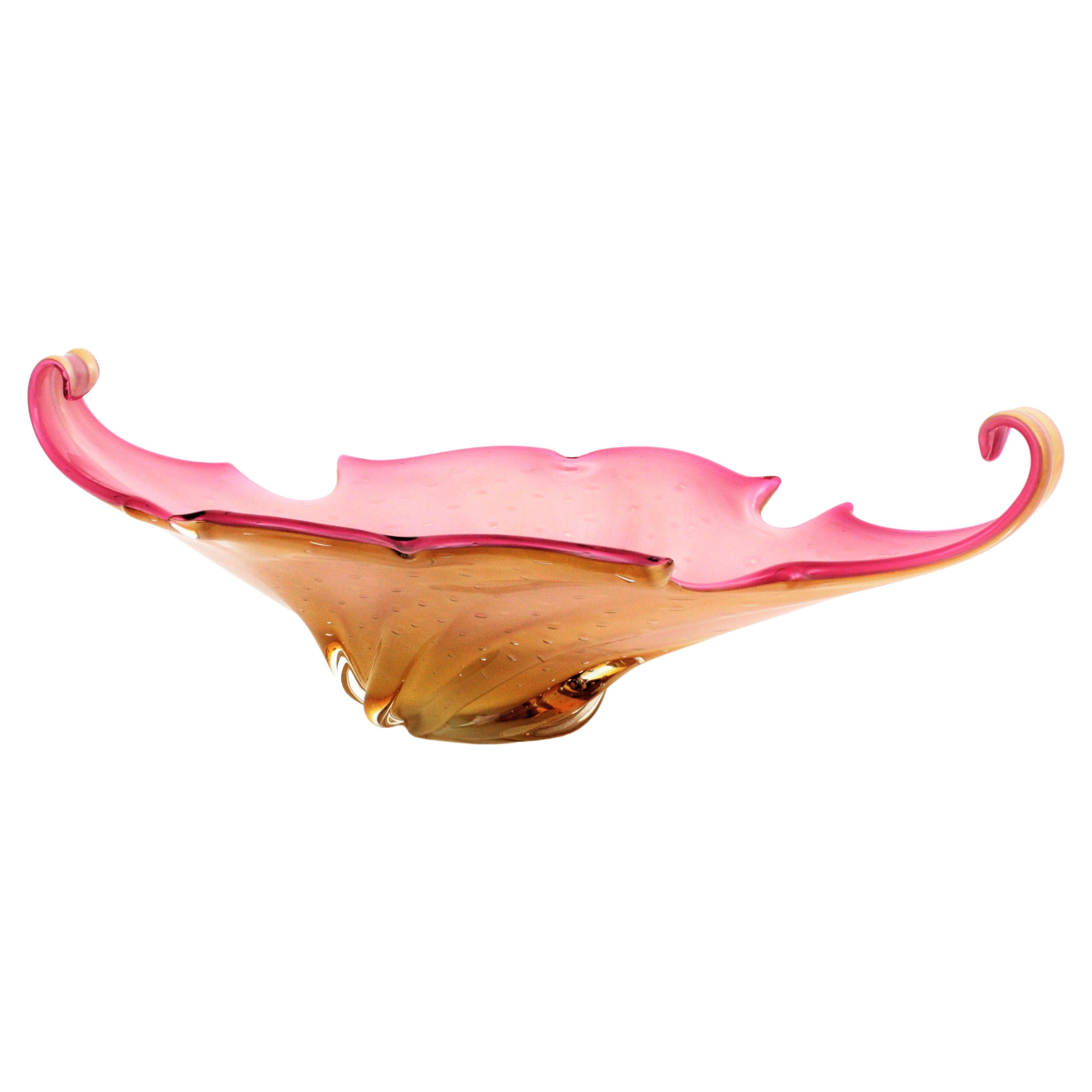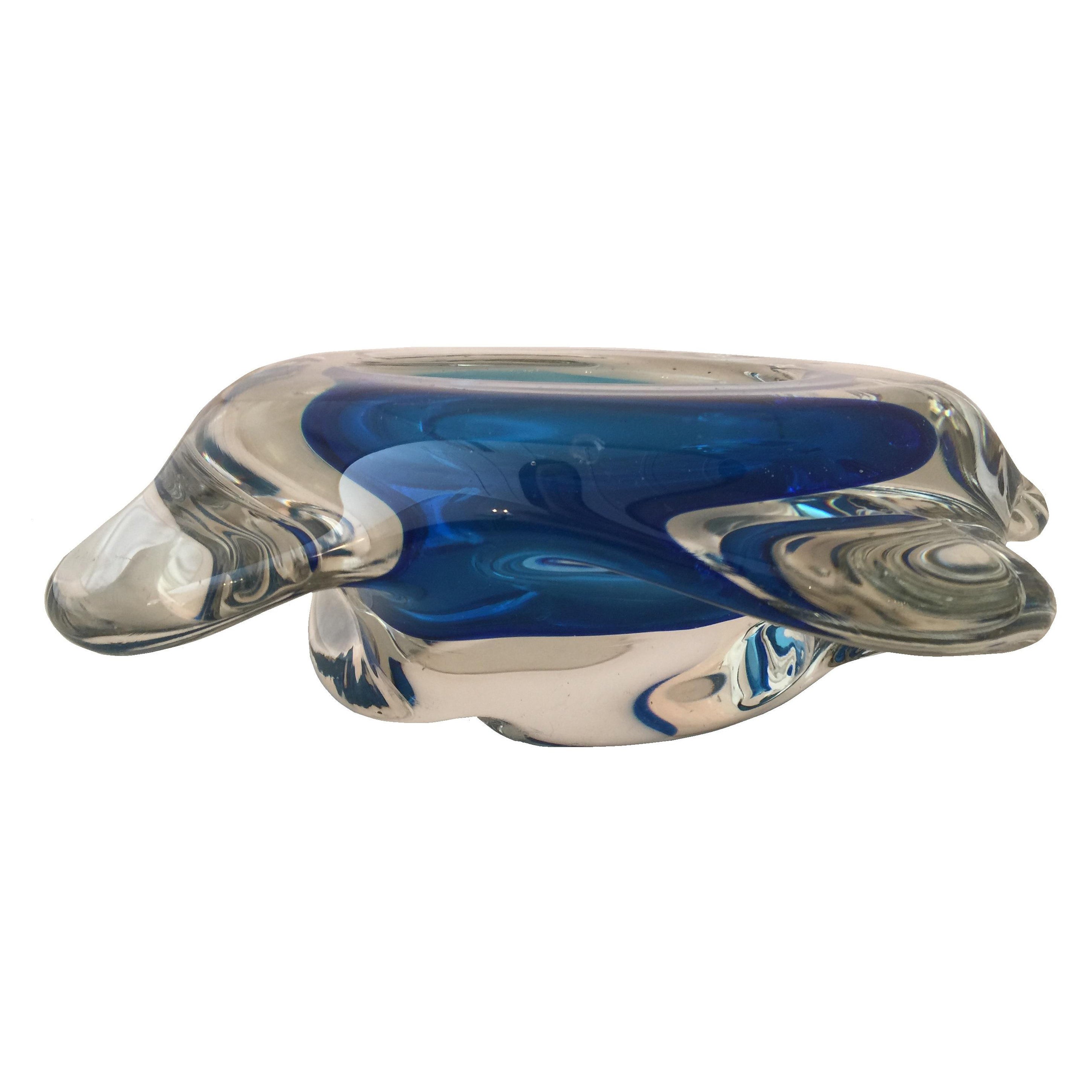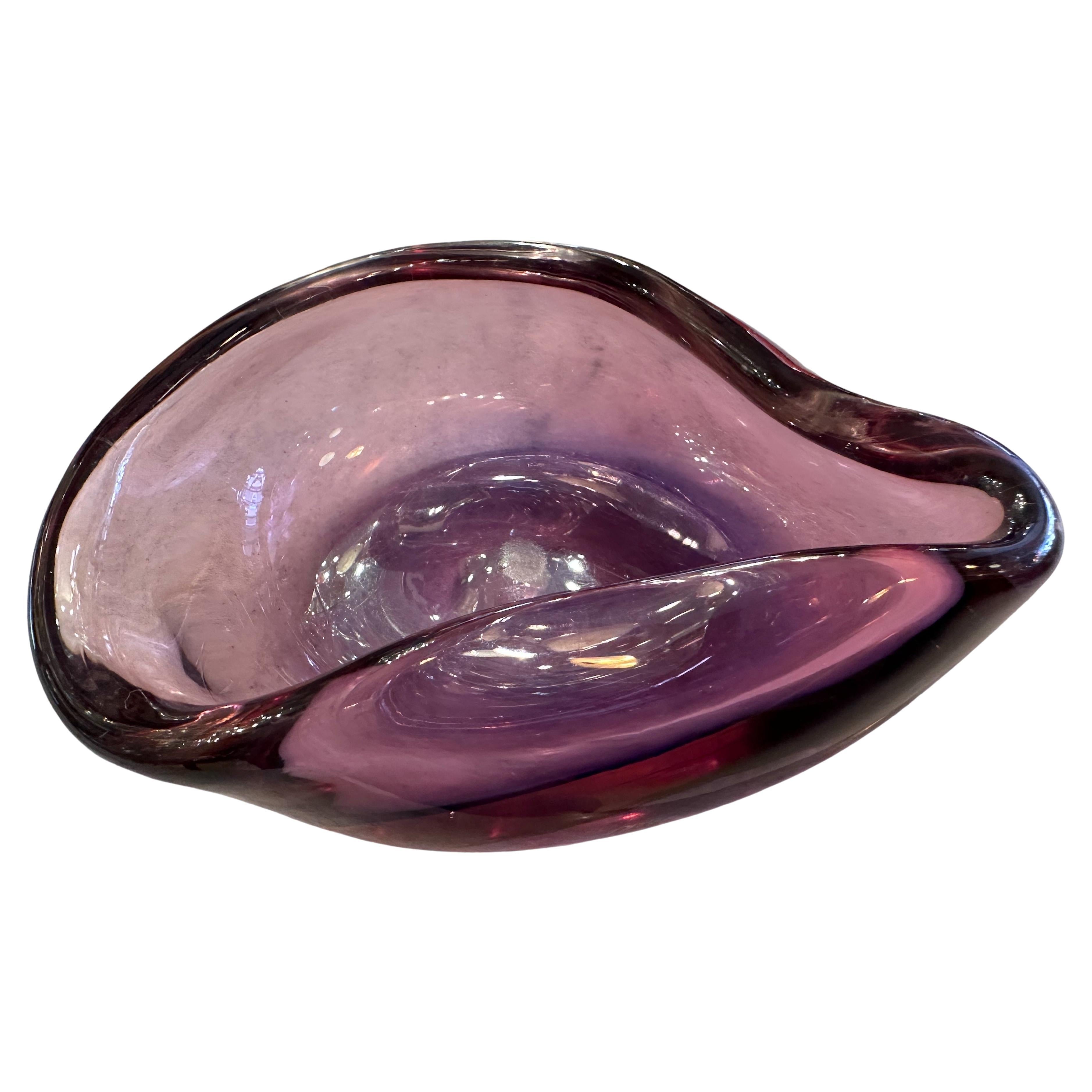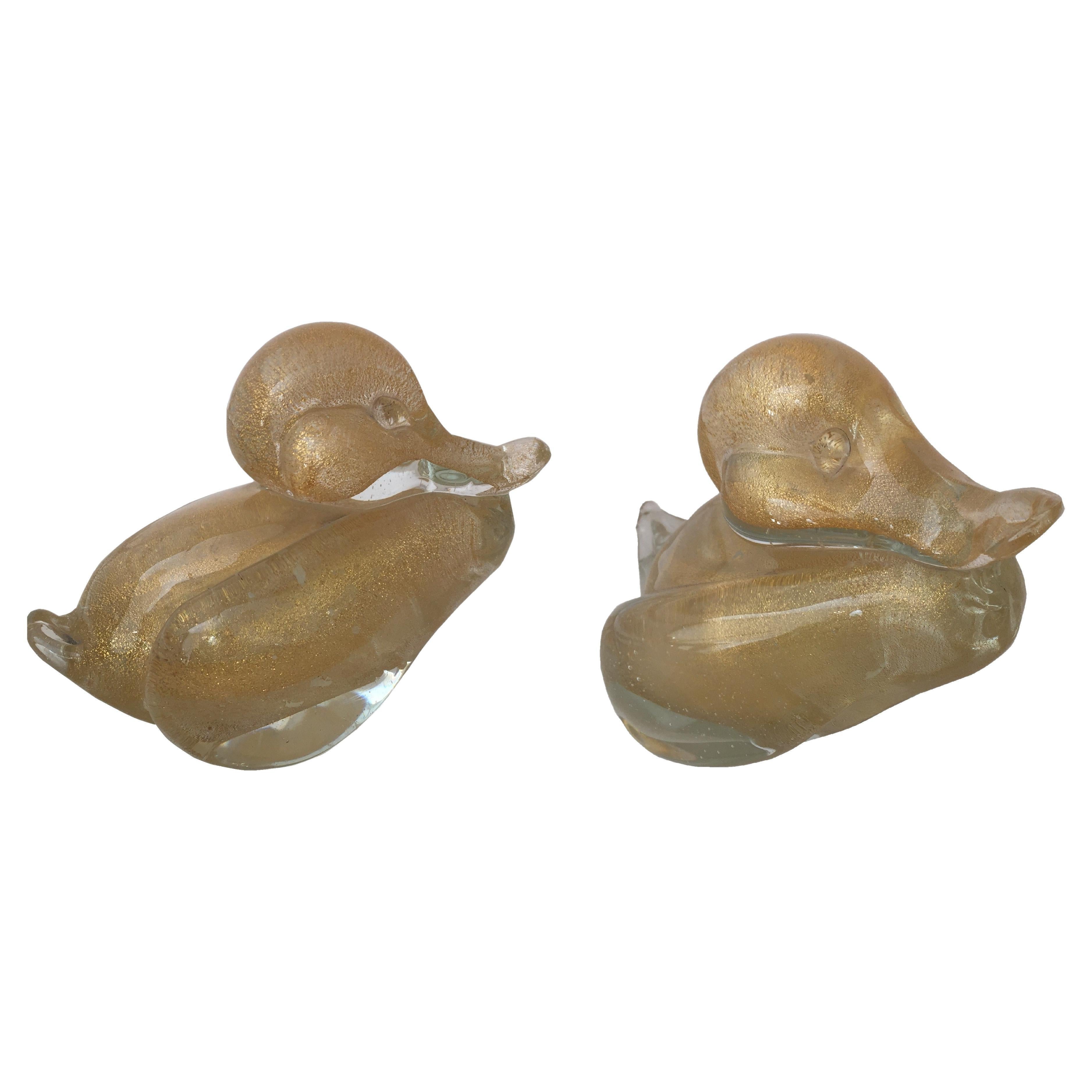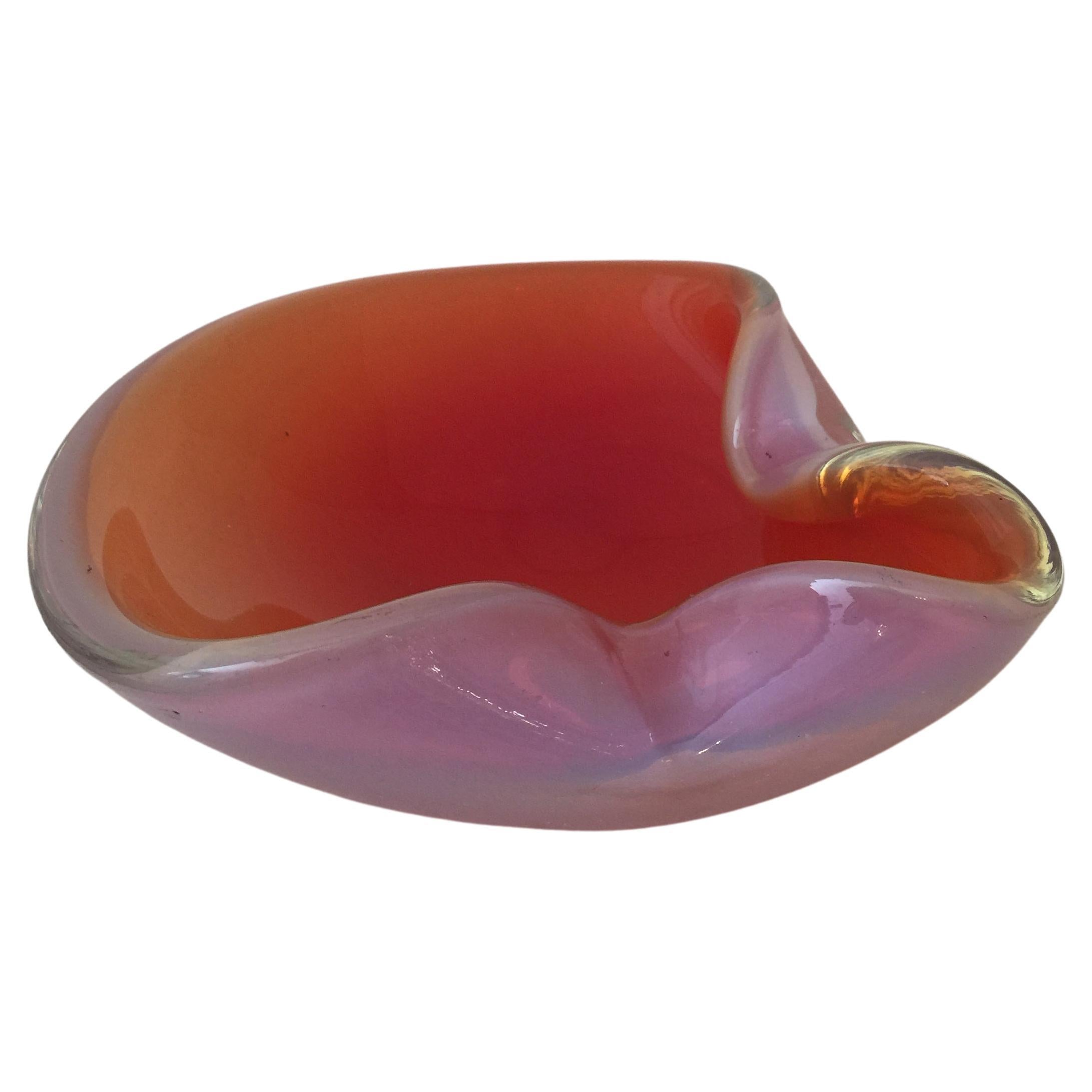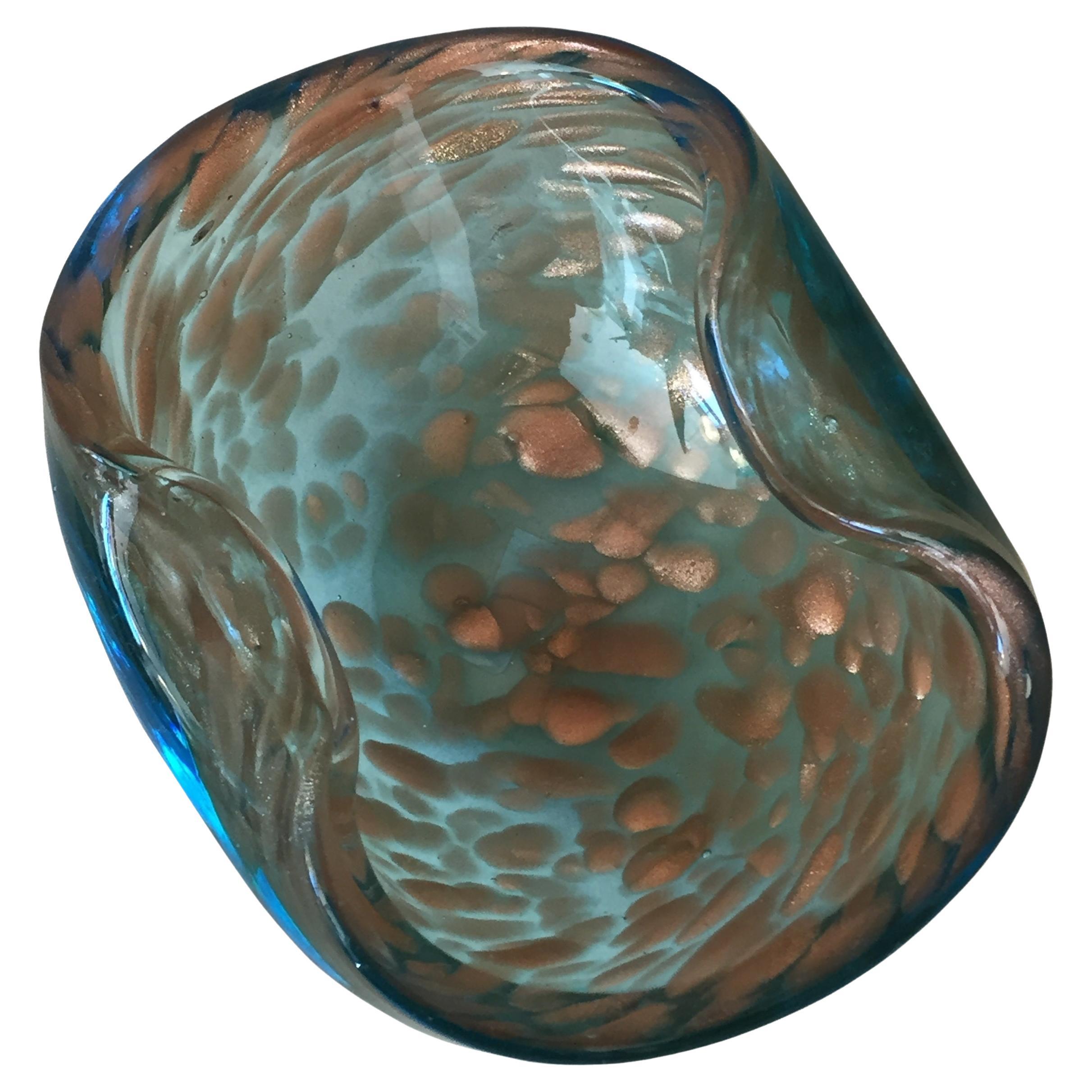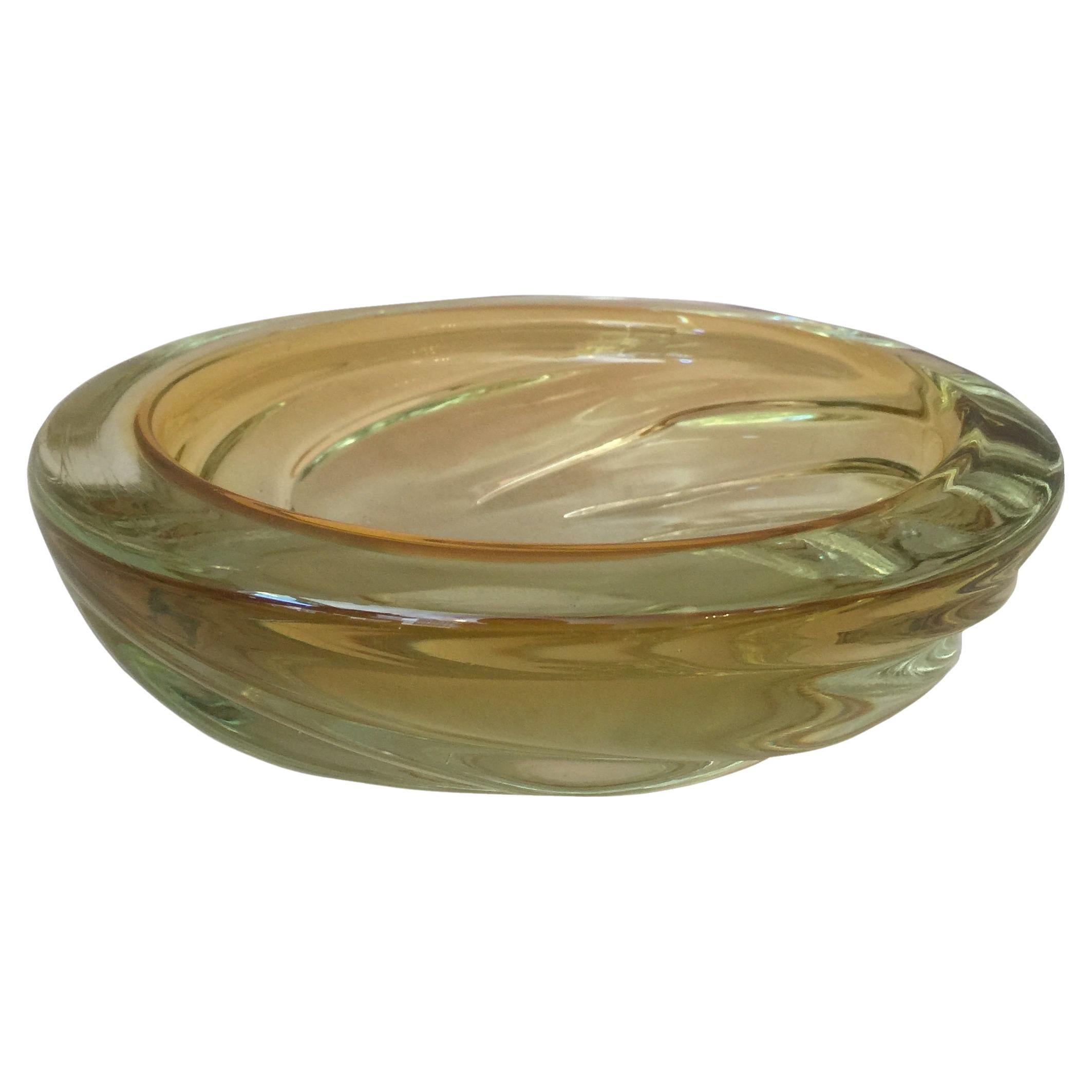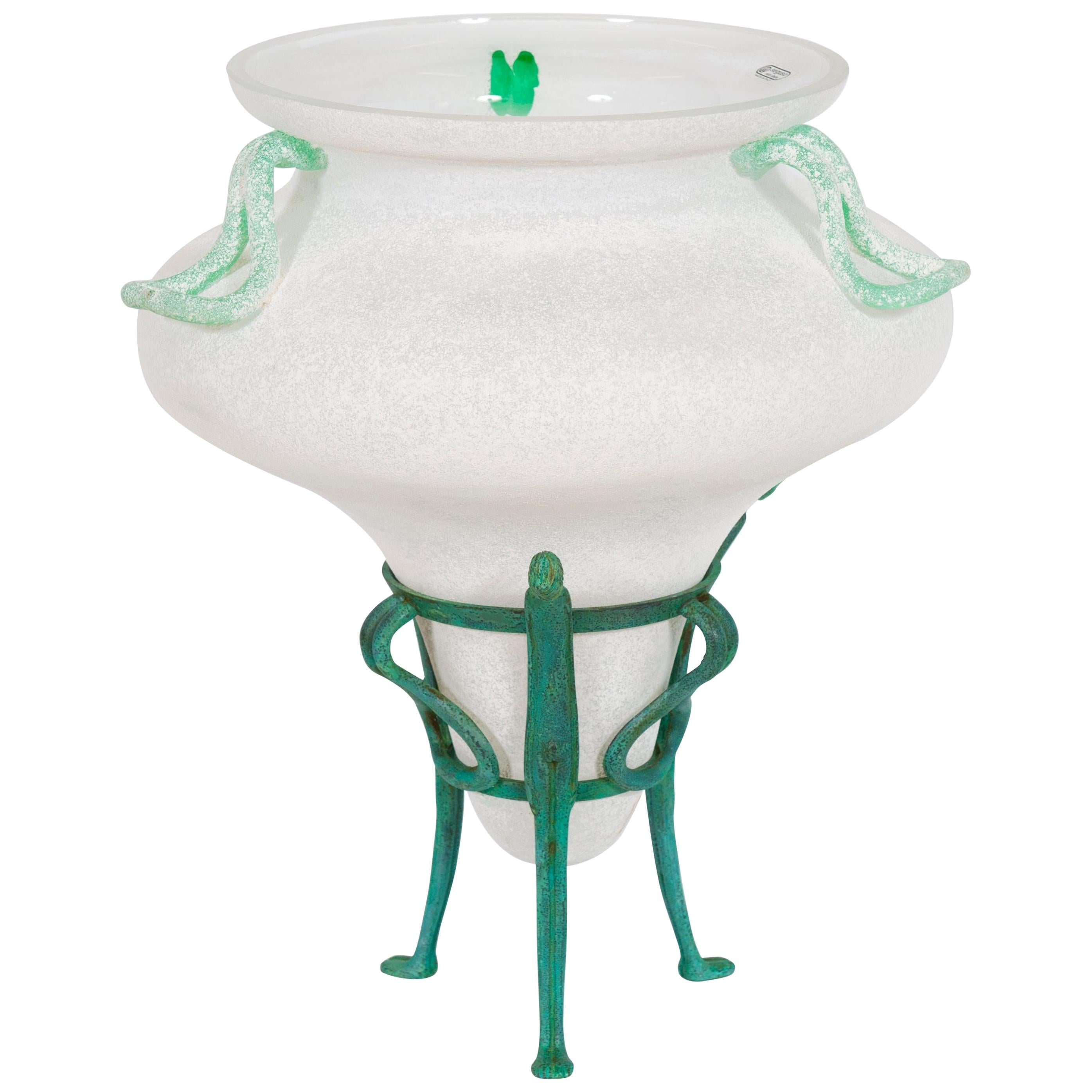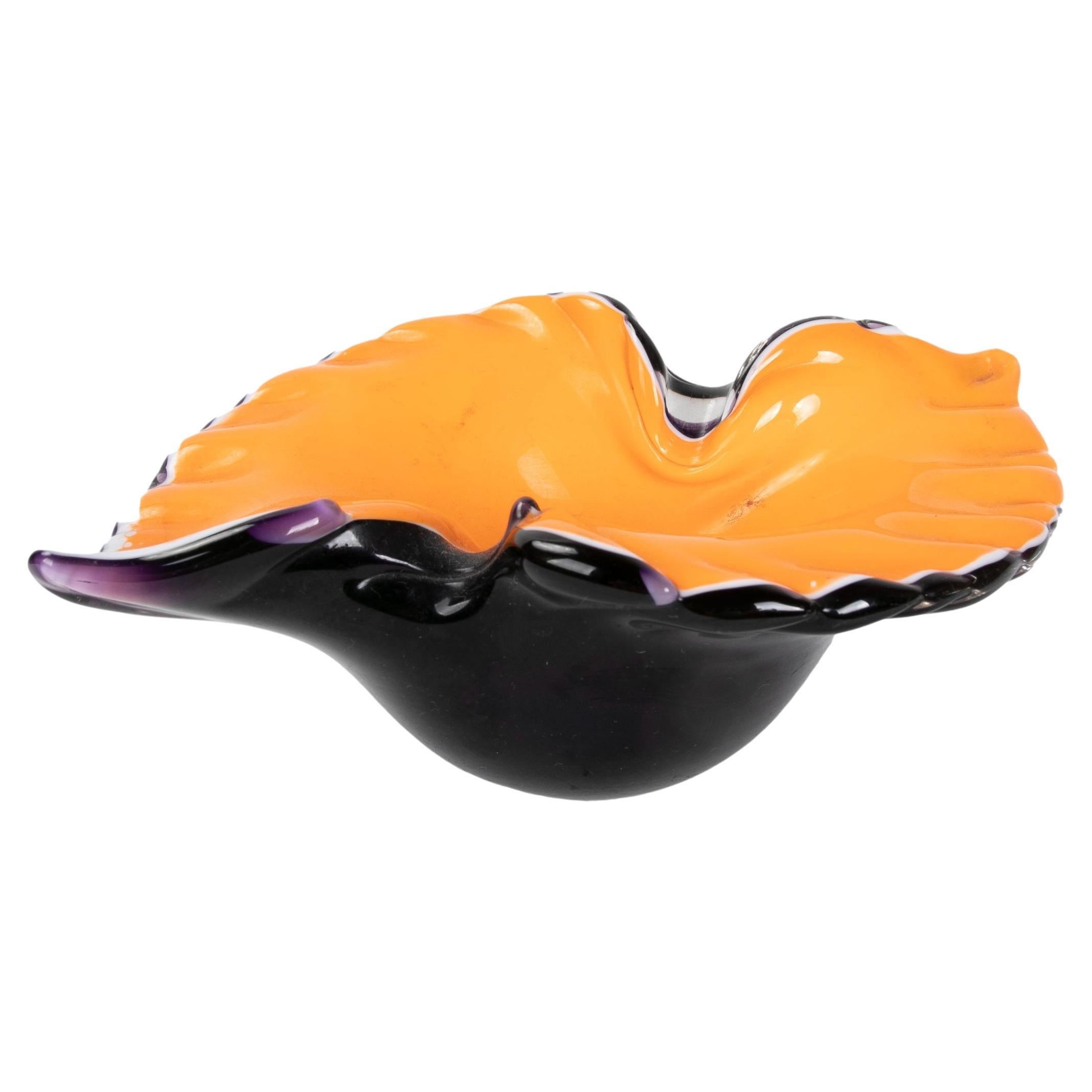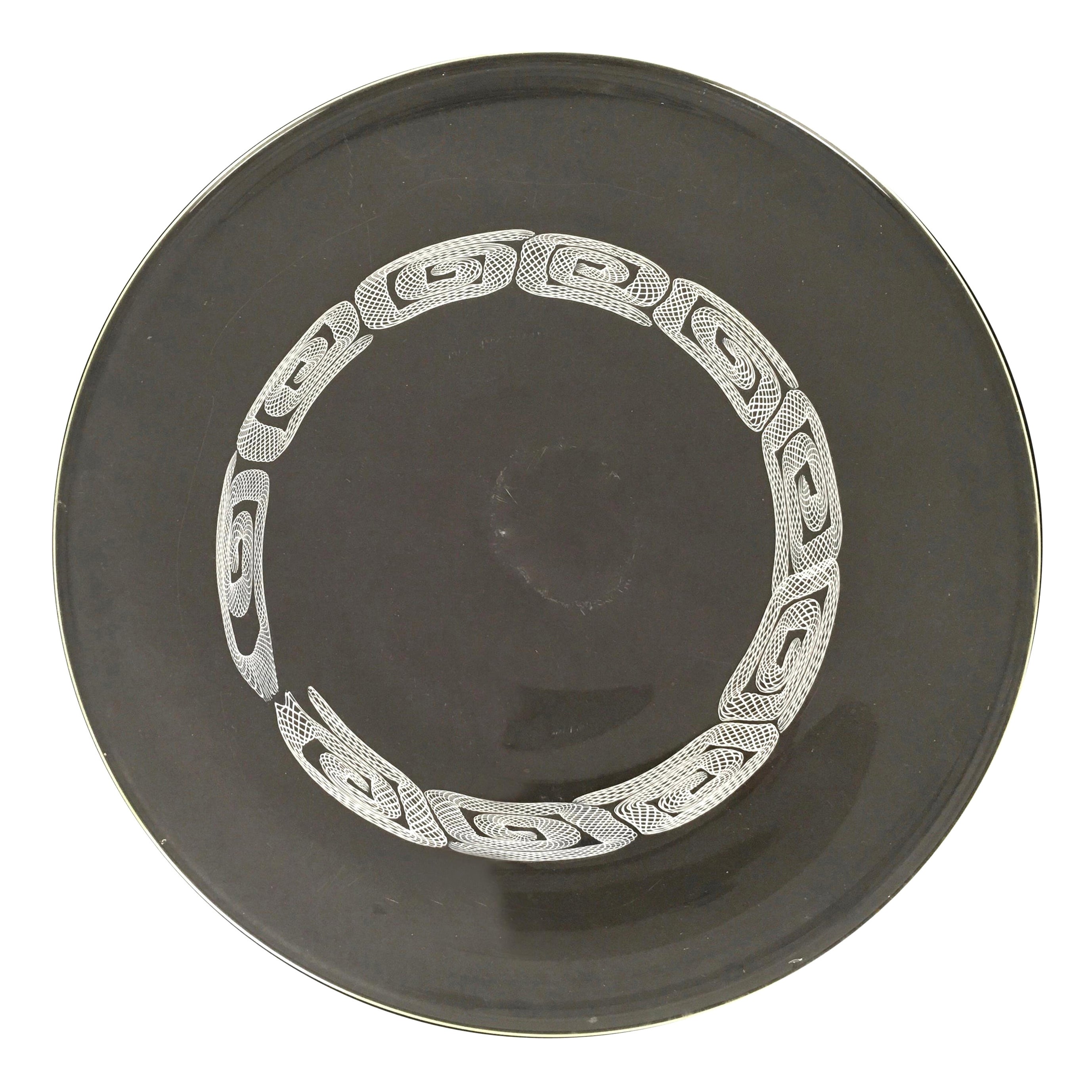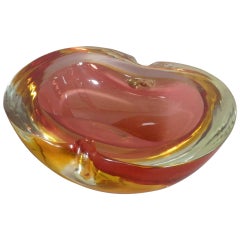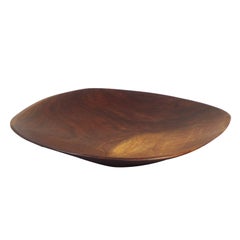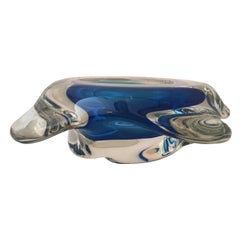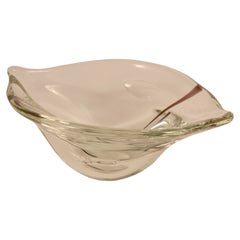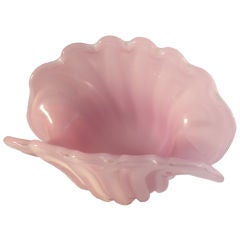
Pink Opalene Murano Shell Dish attributed to Seguso
View Similar Items
Want more images or videos?
Request additional images or videos from the seller
1 of 5
Pink Opalene Murano Shell Dish attributed to Seguso
About the Item
About the Seller
4.9
Vetted Seller
These experienced sellers undergo a comprehensive evaluation by our team of in-house experts.
Established in 1980
1stDibs seller since 2008
724 sales on 1stDibs
Typical response time: 1 hour
More From This SellerView All
- Heavy Murano Glass Clear to Vibrant Color Sommerso Pinched BowlLocated in Ferndale, MIMurano GlassCategory
Vintage 1970s Italian Mid-Century Modern Glass
MaterialsGlass
$450 Sale Price47% Off - Opalescent with Gold Fleck Seguso A.V. Italian Glass VaseBy Seguso Vetri d'ArteLocated in Ferndale, MISigned seguso A.V. Bulbous form glass vase with internal gold flek .Category
Mid-20th Century Italian Mid-Century Modern Glass
MaterialsGlass
- Turned Biomorphic Walnut Bowl by Rude OsolnikBy Rude OsolnikLocated in Ferndale, MITurned biomorphic walnut bowl, Rude Osolnik Originals.Category
Vintage 1960s American American Craftsman Decorative Bowls
MaterialsWalnut
- Three Bio Morphic Astrolite Lucite Fruit or Serving Bowls by RittsBy AstroliteLocated in Ferndale, MIClean and original bio morphic shape Astrolite by the Ritts co. Lucite or acrylic clear plastic serving bowls.Category
Mid-20th Century American Mid-Century Modern Centerpieces
MaterialsAcrylic, Lucite
- Three Eden Falk Kosta Boda Crystal CandlesticksBy Kosta BodaLocated in Ferndale, MISet of three lead crystal candle sticks . Designed by Eden Falk for Kosta Boda. Eight faceted sides form the octagon shape . Signed Kosta Eden Fal...Category
Mid-20th Century Swedish Mid-Century Modern Glass
MaterialsGlass
- Tapio Wirkkala Lead Crystal Glass Bowl with Incised Geometric DesignBy Tapio Wirkkala, IittalaLocated in Ferndale, MILarge low thick glass bowl with incised geometric designs. Signed Tapio Wirkkala with hardly legible number.Category
Mid-20th Century Finnish Mid-Century Modern Decorative Bowls
MaterialsCrystal
$1,200 Sale Price20% Off
You May Also Like
- Archimede Seguso Murano Sommerso Pink Amber Art Glass CenterpieceBy Archimede SegusoLocated in Barcelona, ESMonumental Italian Modernist Murano glass centerpiece vase. Extra Large ( 23, 2 in ) pink amber pulled glass centerpiece attributed to Archimede Seguso. Italy, 1950s. Beautifully sha...Category
Mid-20th Century Italian Mid-Century Modern Centerpieces
MaterialsArt Glass, Blown Glass, Murano Glass, Glass, Sommerso
$1,956 Sale Price20% Off - Murano, Italian, Attributed to, Seguso, 1930By Barovier Seguso & FerroLocated in Ciudad Autónoma Buenos Aires, CMurano We have specialized in the sale of Art Deco and Art Nouveau and Vintage styles since 1982. If you have any questions we are at your disposal. Pushing the button that reads 'View All From Seller'. And you can see more objects to the style for sale. The history of "Seguso Vetri D' Arte" is directly linked to the "Vetreria Artistica Barovier" company. When the Barovier workshop was forced to reduce production in 1929, due to a financial crisis in America, the original group of ten partners had to separate and Antonio Seguso in 1931, assisted by his sons Ernesto and Archimede opened a small workshop of his own. They were joined by Luigi Olimpio Ferro and Napoleone Barovier the following year. Together the craftsmen establish the "Artistica Soffieria e Vetreria Barovier Seguso & Ferro" company as equal partners. In 1934 Flavio Poli joins the firm as artistic director and within only a brief period of time a distinct style of designs emerged. The close collaboration between Flavio Poli, Archimede Seguso and Alfredo Barbini played an important part in the success of the company. New glass techniques are developed which include never before seen color applications. The companies innovative designs constantly received awards and during the 1935 World Fair in Brussels and the 1936 Milan Triennale they did attract the interest of a new group of clientele. One of them is the French wholesale company "Veronese" from Paris which would play a defining role in the history of the company. The demand for an increase in production requires additional investments and the partners felt that there is a need to multiply their investment tenfold. Luigi Olimpio Ferro subsequently decided to withdraw from the company and his shares are acquired by Flavio Poli, which makes him a full partner. As a result, the company name is changed to Seguso Vetri D’ Arte and it is officially recognized in 1937. A period of great success and prosperity ensues, lasting until the outbreak of World War II. The post war period is a time of great change in Europe and the rebuilding of the economical structure in Italy requires major investments which result in the introduction of new import duties and taxes. To safeguard the copyright of the Seguso Vetri D'Arte designs an application for a second entry into the commercial registers of Venice is made by the partners in 1945. Strict export regulations curb international business relations for many years after the war and the company decides to focus on the domestic market instead. In 1946 a large retail location is opened at the Piazza Diaz in Milan where in addition to the art glass, German porcelain and Italian pottery is offered. In 1950 Flavio Poli develops a new sommerso glass technique, which consists of an overlaying of transparent layers of glass. The overlapping creates new shades of color which prior to the introduction of this technique had not been seen. Flavio Poli's most iconic design is the "Valve", which resembles an upright, slightly opened clam shell. The design was introduced in 1951. Mario Pinzoni joins the company in 1953 as a personal assistant to Flavio Poli and his responsibilities as a draftsman included the compilation of archival and the existing production drawing s...Category
Vintage 1930s Italian Art Deco Ashtrays
MaterialsMurano Glass
- Murano Centerpiece Bowl Attributed to SegusoBy Archimede SegusoLocated in New York, NYGreat quality Murano Art Glass bowl, attributed to Seguso. Perfect condition, heavy clear body with purple stripe. Substantial and impressive centerpiece bowl.Category
Vintage 1950s Italian Mid-Century Modern Centerpieces
MaterialsArt Glass
- Murano, 1940 . Attributed to Seguso - Barovier, ItalianBy Barovier Seguso & FerroLocated in Ciudad Autónoma Buenos Aires, CMurano Attributed to Seguso - Barovier We have specialized in the sale of Art Deco and Art Nouveau and Vintage styles since 1982. If you have any questions we are at your disposal. Pushing the button that reads 'View All From Seller'. And you can see more objects to the style for sale. The history of "Seguso Vetri D' Arte" is directly linked to the "Vetreria Artistica Barovier" company. When the Barovier workshop was forced to reduce production in 1929, due to a financial crisis in America, the original group of ten partners had to separate and Antonio Seguso in 1931, assisted by his sons Ernesto and Archimede opened a small workshop of his own. They were joined by Luigi Olimpio Ferro and Napoleone Barovier the following year. Together the craftsmen establish the "Artistica Soffieria e Vetreria Barovier Seguso & Ferro" company as equal partners. In 1934 Flavio Poli joins the firm as artistic director and within only a brief period of time a distinct style of designs emerged. The close collaboration between Flavio Poli, Archimede Seguso and Alfredo Barbini played an important part in the success of the company. New glass techniques are developed which include never before seen color applications. The companies innovative designs constantly received awards and during the 1935 World Fair in Brussels and the 1936 Milan Triennale they did attract the interest of a new group of clientele. One of them is the French wholesale company "Veronese" from Paris which would play a defining role in the history of the company. The demand for an increase in production requires additional investments and the partners felt that there is a need to multiply their investment tenfold. Luigi Olimpio Ferro subsequently decided to withdraw from the company and his shares are acquired by Flavio Poli, which makes him a full partner. As a result, the company name is changed to Seguso Vetri D’ Arte and it is officially recognized in 1937. A period of great success and prosperity ensues, lasting until the outbreak of World War II. The post war period is a time of great change in Europe and the rebuilding of the economical structure in Italy requires major investments which result in the introduction of new import duties and taxes. To safeguard the copyright of the Seguso Vetri D'Arte designs an application for a second entry into the commercial registers of Venice is made by the partners in 1945. Strict export regulations curb international business relations for many years after the war and the company decides to focus on the domestic market instead. In 1946 a large retail location is opened at the Piazza Diaz in Milan where in addition to the art glass...Category
Vintage 1940s Italian Art Deco Centerpieces
MaterialsMurano Glass
- Amaizing Murano, 1960, Italian, Attributed to SegusoLocated in Ciudad Autónoma Buenos Aires, CMurano. We have specialized in the sale of Art Deco and Art Nouveau and Vintage styles since 1982. If you have any questions we are at your disposal. Pushing the button that reads 'V...Category
Vintage 1960s Italian Mid-Century Modern Centerpieces
MaterialsMurano Glass
- Ducks Murano, 1940, Italian, Attributed to Seguso, BarovierBy Barovier Seguso & FerroLocated in Ciudad Autónoma Buenos Aires, CMurano with gold We have specialized in the sale of Art Deco and Art Nouveau and Vintage styles since 1982. If you have any questions we are at your disposal. Pushing the button that reads 'View All From Seller'. And you can see more objects to the style for sale. Attributed to Seguso - Barovier We have specialized in the sale of Art Deco and Art Nouveau and Vintage styles since 1982. If you have any questions we are at your disposal. The history of "Seguso Vetri D' Arte" is directly linked to the "Vetreria Artistica Barovier" company. When the Barovier workshop was forced to reduce production in 1929, due to a financial crisis in America, the original group of ten partners had to separate and Antonio Seguso in 1931, assisted by his sons Ernesto and Archimede opened a small workshop of his own. They were joined by Luigi Olimpio Ferro and Napoleone Barovier the following year. Together the craftsmen establish the "Artistica Soffieria e Vetreria Barovier Seguso & Ferro" company as equal partners. In 1934 Flavio Poli joins the firm as artistic director and within only a brief period of time a distinct style of designs emerged. The close collaboration between Flavio Poli, Archimede Seguso and Alfredo Barbini played an important part in the success of the company. New glass techniques are developed which include never before seen color applications. The companies innovative designs constantly received awards and during the 1935 World Fair in Brussels and the 1936 Milan Triennale they did attract the interest of a new group of clientele. One of them is the French wholesale company "Veronese" from Paris which would play a defining role in the history of the company. The demand for an increase in production requires additional investments and the partners felt that there is a need to multiply their investment tenfold. Luigi Olimpio Ferro subsequently decided to withdraw from the company and his shares are acquired by Flavio Poli, which makes him a full partner. As a result, the company name is changed to Seguso Vetri D’ Arte and it is officially recognized in 1937. A period of great success and prosperity ensues, lasting until the outbreak of World War II. The post war period is a time of great change in Europe and the rebuilding of the economical structure in Italy requires major investments which result in the introduction of new import duties and taxes. To safeguard the copyright of the Seguso Vetri D'Arte designs an application for a second entry into the commercial registers of Venice is made by the partners in 1945. Strict export regulations curb international business relations for many years after the war and the company decides to focus on the domestic market instead. In 1946 a large retail location is opened at the Piazza Diaz in Milan where in addition to the art glass, German porcelain and Italian pottery is offered. In 1950 Flavio Poli develops a new sommerso glass technique, which consists of an overlaying of transparent layers of glass. The overlapping creates new shades of color which prior to the introduction of this technique had not been seen. Flavio Poli's most iconic design is the "Valve", which resembles an upright, slightly opened clam shell. The design was introduced in 1951. Mario Pinzoni joins the company in 1953 as a personal assistant to Flavio Poli and his responsibilities as a draftsman included the compilation of archival and the existing production drawing s...Category
Vintage 1940s Italian Art Deco Centerpieces
MaterialsGold
Recently Viewed
View AllMore Ways To Browse
Pink Murano Dish
Pink Murano Glass Dish
White Murano Glass Shell
Seguso Shell
Murano Pink Glass Shell
Pink Murano Shell
Seguso Murano Shell
Murano Glass Shell Dish
Murano Shell Dish
Seguso Shell Dish
Green Glass Stemware
Green Stemware
Green Coupes
Crystal Highball Glasses
Vintage Steuben Glass
Gilt Dinning
Antique Brandy Bottles
Pink Champagne Glasses Vintage
